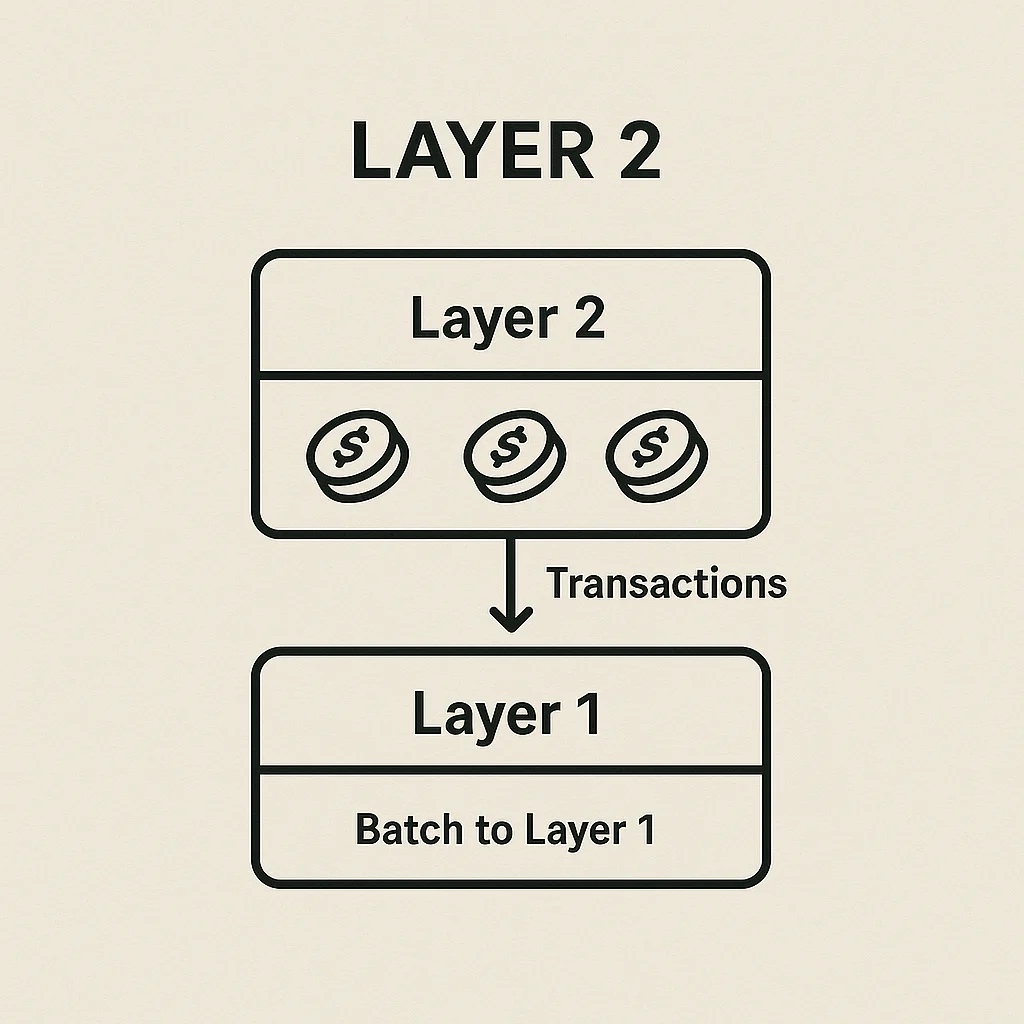Layer 2
Layer 2: Scaling Solutions for Expensive Blockchains
Layer 2 networks solve Ethereum’s biggest problem – ridiculous gas fees. They process transactions cheaply and quickly while inheriting Ethereum’s security.
Layer 2 is a separate blockchain or protocol built on top of a main blockchain (Layer 1) to improve scalability and reduce transaction costs. These solutions handle transactions off the main chain, then batch settle results back to Layer 1.
How Layer 2 Works
Rollups bundle hundreds of transactions together and submit cryptographic proofs to Ethereum, splitting gas costs across many users. This reduces individual transaction fees from $50+ to under $1.
State channels allow parties to transact privately off-chain, only settling final balances on-chain. Think of it like opening a bar tab and paying the total at the end.
Sidechains operate as independent blockchains with their own consensus mechanisms, periodically checkpointing to the main chain for security.

Real-World Examples
- Polygon – Popular sidechain with sub-cent transaction fees
- Arbitrum – Optimistic rollup with major DeFi protocol support
- Lightning Network – Bitcoin’s Layer 2 for instant micropayments
Why Beginners Should Care
Layer 2 makes DeFi accessible to normal people. Instead of paying $100 in gas fees to swap $500 worth of tokens, you pay $2 and get the same security guarantees.
Start with Layer 2 for learning DeFi. Polygon and Arbitrum offer the same protocols as Ethereum mainnet but with affordable transaction costs for experimentation.
Bridge assets carefully between layers – bridge contracts are common targets for hackers and exploits.
